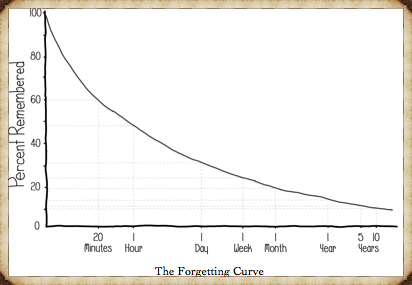The better news is that with the right methodology, it’s possible to relearn a language you’ve forgotten in 21 days or less. Whether you learned Spanish during your study abroad in South America, or went to Paris last year and picked up some Francais, a lot of the knowledge you’ve acquired should still remain in your long-term memory.
The solution then, is to reactivate those unused memories stored in your brain in order to bring you back to the level you were, if not better!
Day 1–7
1. Assess where you are and plan
With a strong plan and goal setting, you can reach your desired outcome in more effective and faster ways. The first step is to perform a self-analysis of where you are right now. Step I. Recall: Remember where you were with your language before you stopped practicing. Were you a beginner, intermediate, or advanced? Were your reading skills strong, but your speaking skills weak? Did you lack knowledge of grammar structure? Step II. Analysis: Now assess yourself in the 4 core uses of the language: (writing, reading, hearing, and speaking) by immersing yourself in the forgotten language in these respective mediums.
Writing: write a journal entry about your day Reading: read a newspaper, book, or article Hearing: listen to a podcast or movie Speaking: reconnect with an old friend or work with your language coach
Step III. Plan of focus: When you’ve finished your self-analysis, you’ll notice that you have better recognition of certain language components than others. Perhaps you have kept your ability to understand through reading, but your speaking skills have deterioriated. Now, you can focus your time, energy, and resources on improving the specific skillsets that you’ve forgotten the most, rather than spending your effort on skills that will only bring you 20% of the results you’re looking to achieve.
2. Watch TV/Movies
This may be one of the best, yet productive excuses to watch more TV. But there’s a catch: you need to watch it in your forgotten language. Free or premium platforms like Youtube or Netflix allow you to watch TV shows and movies in many of the popular languages you desire (just don’t expect to find the languages Yola or Avestan with ease).
Here’s a few recommended tips if you’re:
A beginner: Watch with foreign subtitles and native audio An intermediate: Watch with native audio and foreign subtitles An advanced-intermediate: Watch with foreign audio and no subtitles (or foreign subtitles)
*These are just recommended guidelines. It’s better to push yourself to consume more foreign content than not. If you’re in doubt, go foreign.
Day 8–14
3. Take foreign immersion wherever you go
By that we mean: listen to audio recordings in your foreign language as you commute, work and exercise. This can be in the form of a podcast show, radio, or a recorded audio tape. What’s great about audio is that you can do multiple things at once, and this form of relearning won’t interrupt your regular routines. Here are some recommended language content resources that are free (also great for learning a language for the first time):
Audria Coffee Break Spanish Spanish Pod 101 Study Spanish Rype Classes
Here are some resources we recommend:
Day 15–21
5. Speak it till your jaw hurts
There’s no faster way to improve than forcing yourself to speak the forgotten language, especially in front of native speakers. It’ll feel uncomfortable and you’ll make mistakes, no doubt about it. With that said, it’s recommended you speak with a native speaker who is patient, can provide you professional feedback, and most importantly — make you feel comfortable. Finding a language partner would be the next alternative, but read about the potential downsides of conversation exchange when you learn a language before diving in. Here’s some places you could find a partner:
Couchsurfing Events My Language Exchange Conversation Exchange Local Meetup Events
Don’t let that discourage you from getting started. It’s better to prepared for the path ahead than be struck with frustration. You’ve already done the hard work by learning the language in the first place. Now it’s your chance to reward yourself by reviving what you’ve already learned.
Over to you
Which foreign language have you previously learned but forgotten? Will you be implementing each of the steps we outlined to learn a language you’ve forgotten? If not, which ones were your favorite? We’d love to hear from you below!


